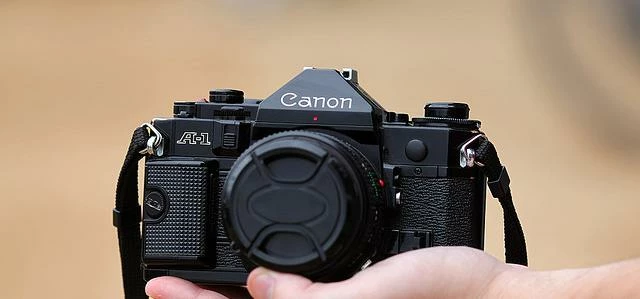
Partner Article
The Imaging of the Future
There is a reason the idiom ‘a picture speaks a thousand words’ is well known and widely used — simply put, it rings true. Words are a powerful tool, but images can not only serve to strengthen their message, and in some cases even communicate it better. This can be seen when trying to communicate large amounts of information, within a newspaper article for example — regardless of a newspaper’s target audience or viewpoint, the use of images is key to striking a message.
At first this may seem counter-intuitive, emphasising the importance of images through such a text heavy medium. However, when looked at more closely, it quickly becomes apparent that text alone would not be nearly as effective as it is in combination with images. In fact, two years ago the French newspaper Libération explicitly emitted photographs from its paper to demonstrate how fundamentally important both photographs and photographers are in the newspaper industry. Whether it’s a diagram demonstrating a scientific concept, or a photograph alongside a newspaper article, images can be powerful storytellers in their own right.
With a world that is becoming increasingly saturated with news and research, images also play that much more of part in grabbing the reader’s attention. Mention digital age, short timespan to grab the reader/user’s attention. When coupled with a carefully-chosen caption, these can be one of the most effective methods to draw a reader in, giving just the right bite-size piece of information to leave the reader curious to find out more. Images are not only helpful in making information easier to understand — in academic papers, diagrams and graphs can aid the reader in visualising more easily the points being made in the body of the text — but crucial to drawing readers towards that information in the first place.
Yet we are in an age of saturation where images are everywhere and content lies abundant at our fingertips. Because of this it is interesting to think what the next step in the future of imaging could be. One very promising idea is thermal imaging.
Thermal imaging is also known as thermography or infrared thermography (IRT), and contrary to what its name might suggest, does not in fact record the thermal temperature of objects. Instead it records differences in infrared radiation, which can in turn be seen as a reflection of differences in temperature, leading to its use as a photographic representation of temperature variations. While the concept sounds complex, its visual results are something many people are already somewhat familiar with.
Thermal imaging is brilliant for creating striking compositions, and has already been used to communicate messages by a host of organisations, from Oxfam to British Gas. It is also beginning to be used in art, such as experimental portraiture.
Yet thermal imaging is more than just striking: it is fast working, accurate, and useful in a multitude of places — making it one of the most exciting and promising types of imaging to follow today. Here are a few of the possible uses of thermal imaging that show how versatile it is:
Surveillance In surveillance thermal imaging can be a great substitute for CCTV, as it is not only low maintenance, but usable in all weather conditions, both day and night. Plus it’s very difficult to evade — it is almost impossible to disguise one’s body heat.
Firefighting Thermal imaging can help save lives as it allows firefighters to see through smoke, the thermal imaging cameras themselves are designed to be easily transportable as hand-held cameras or as cameras strapped to helmets.
Maintenance Thermal imaging makes it a lot easier to detect quality of construction as it shows sources of heat loss in housing, making it ideal for home inspections and home energy audits. In fact, thermal imaging can even ‘see’ exhaust gases from vehicles, and so could help determine air quality around a building (and how much gas may be leaking into the building).
Healthcare A particularly positive use for thermal imaging that is currently emerging, is in health care — it can be used to assess blood flow circulation and any changes in it. An especially important discovery is its use in cancer research, helping to detect breast cancerearly on. As thermal imaging is non-contact, this is a far less invasive alternative to more traditional mammography systems.
From an innovative and striking way of communicating messages by organisations, to a step towards saving lives, it seems likely that thermal imaging is going to be one of the loudest voices in the imaging of the future. So with short attention spans making lengthy explanations less effective and images more important in the distribution of informative content, a picture does indeed speak a thousand words.
This was posted in Bdaily's Members' News section by Chloe Hashemi .








 How to make your growth strategy deliver in 2026
How to make your growth strategy deliver in 2026
 Powering a new wave of regional screen indies
Powering a new wave of regional screen indies
 A new year and a new outlook for property scene
A new year and a new outlook for property scene
 Zero per cent - but maximum brand exposure
Zero per cent - but maximum brand exposure
 We don’t talk about money stress enough
We don’t talk about money stress enough
 A year of resilience, growth and collaboration
A year of resilience, growth and collaboration
 Apprenticeships: Lower standards risk safety
Apprenticeships: Lower standards risk safety
 Keeping it reel: Creating video in an authenticity era
Keeping it reel: Creating video in an authenticity era
 Budget: Creating a more vibrant market economy
Budget: Creating a more vibrant market economy
 Celebrating excellence and community support
Celebrating excellence and community support
 The value of nurturing homegrown innovation
The value of nurturing homegrown innovation
 A dynamic, fair and innovative economy
A dynamic, fair and innovative economy